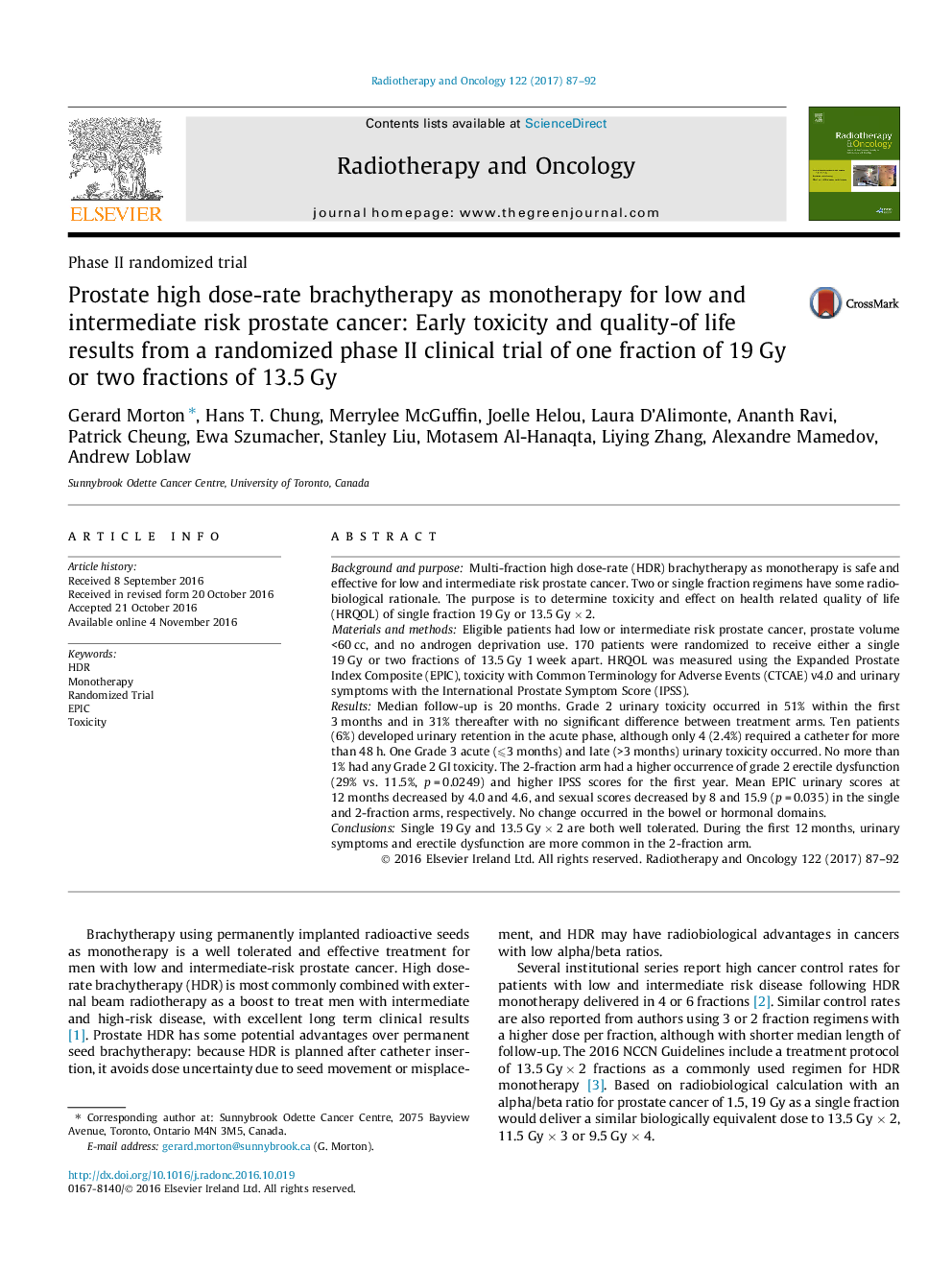| Article ID | Journal | Published Year | Pages | File Type |
|---|---|---|---|---|
| 5529738 | Radiotherapy and Oncology | 2017 | 6 Pages |
Background and purposeMulti-fraction high dose-rate (HDR) brachytherapy as monotherapy is safe and effective for low and intermediate risk prostate cancer. Two or single fraction regimens have some radiobiological rationale. The purpose is to determine toxicity and effect on health related quality of life (HRQOL) of single fraction 19 Gy or 13.5 Gy Ã 2.Materials and methodsEligible patients had low or intermediate risk prostate cancer, prostate volume <60 cc, and no androgen deprivation use. 170 patients were randomized to receive either a single 19 Gy or two fractions of 13.5 Gy 1 week apart. HRQOL was measured using the Expanded Prostate Index Composite (EPIC), toxicity with Common Terminology for Adverse Events (CTCAE) v4.0 and urinary symptoms with the International Prostate Symptom Score (IPSS).ResultsMedian follow-up is 20 months. Grade 2 urinary toxicity occurred in 51% within the first 3 months and in 31% thereafter with no significant difference between treatment arms. Ten patients (6%) developed urinary retention in the acute phase, although only 4 (2.4%) required a catheter for more than 48 h. One Grade 3 acute (⩽3 months) and late (>3 months) urinary toxicity occurred. No more than 1% had any Grade 2 GI toxicity. The 2-fraction arm had a higher occurrence of grade 2 erectile dysfunction (29% vs. 11.5%, p = 0.0249) and higher IPSS scores for the first year. Mean EPIC urinary scores at 12 months decreased by 4.0 and 4.6, and sexual scores decreased by 8 and 15.9 (p = 0.035) in the single and 2-fraction arms, respectively. No change occurred in the bowel or hormonal domains.ConclusionsSingle 19 Gy and 13.5 Gy Ã 2 are both well tolerated. During the first 12 months, urinary symptoms and erectile dysfunction are more common in the 2-fraction arm.
